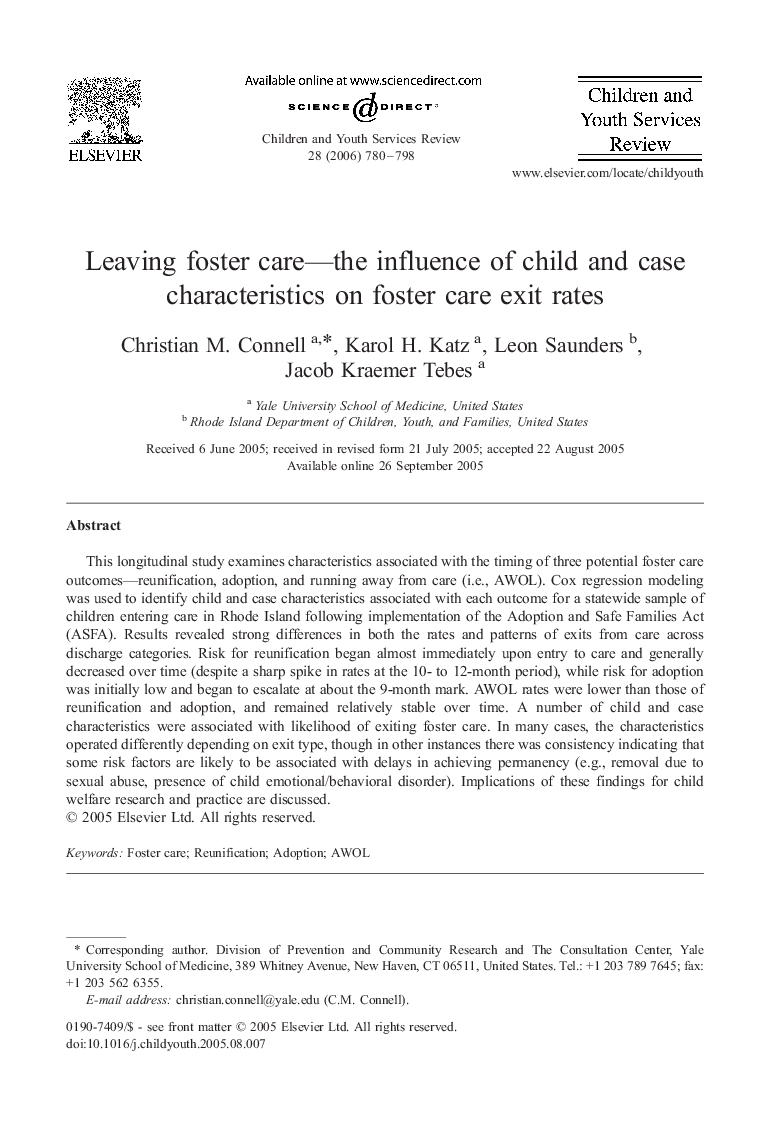| Article ID | Journal | Published Year | Pages | File Type |
|---|---|---|---|---|
| 347645 | Children and Youth Services Review | 2006 | 19 Pages |
This longitudinal study examines characteristics associated with the timing of three potential foster care outcomes—reunification, adoption, and running away from care (i.e., AWOL). Cox regression modeling was used to identify child and case characteristics associated with each outcome for a statewide sample of children entering care in Rhode Island following implementation of the Adoption and Safe Families Act (ASFA). Results revealed strong differences in both the rates and patterns of exits from care across discharge categories. Risk for reunification began almost immediately upon entry to care and generally decreased over time (despite a sharp spike in rates at the 10- to 12-month period), while risk for adoption was initially low and began to escalate at about the 9-month mark. AWOL rates were lower than those of reunification and adoption, and remained relatively stable over time. A number of child and case characteristics were associated with likelihood of exiting foster care. In many cases, the characteristics operated differently depending on exit type, though in other instances there was consistency indicating that some risk factors are likely to be associated with delays in achieving permanency (e.g., removal due to sexual abuse, presence of child emotional/behavioral disorder). Implications of these findings for child welfare research and practice are discussed.
